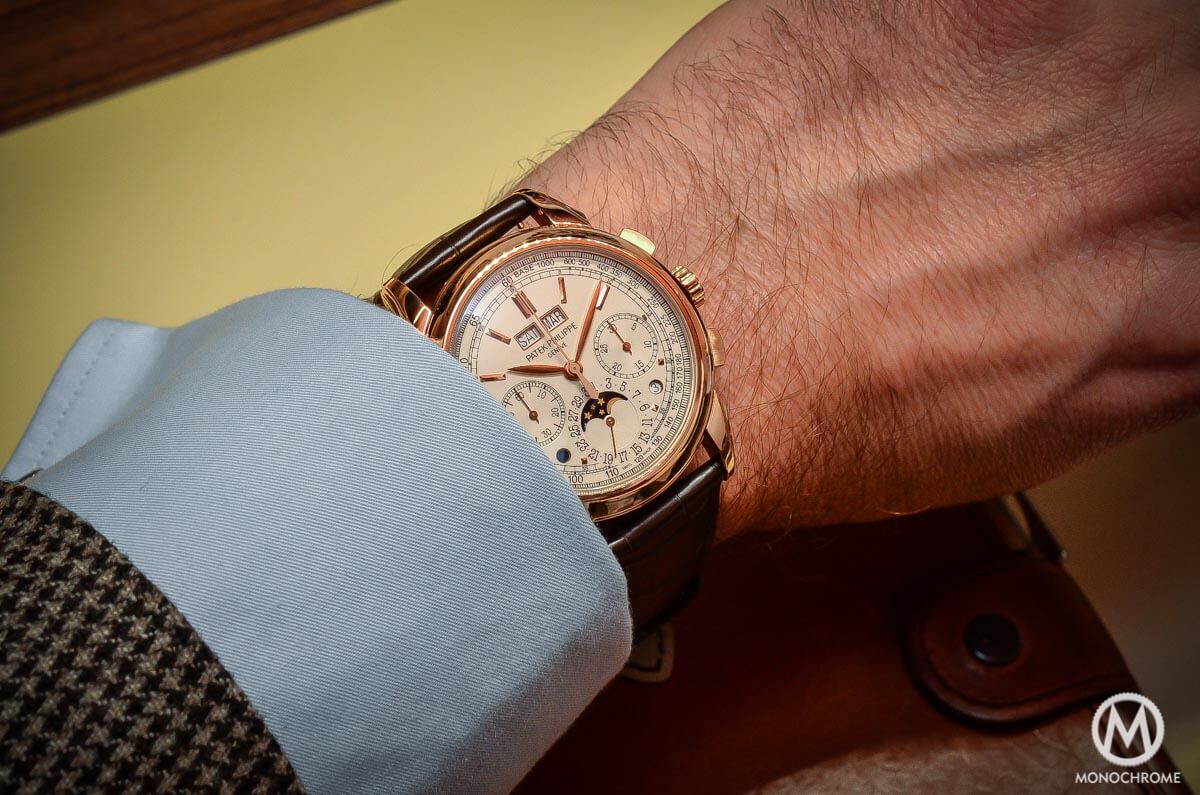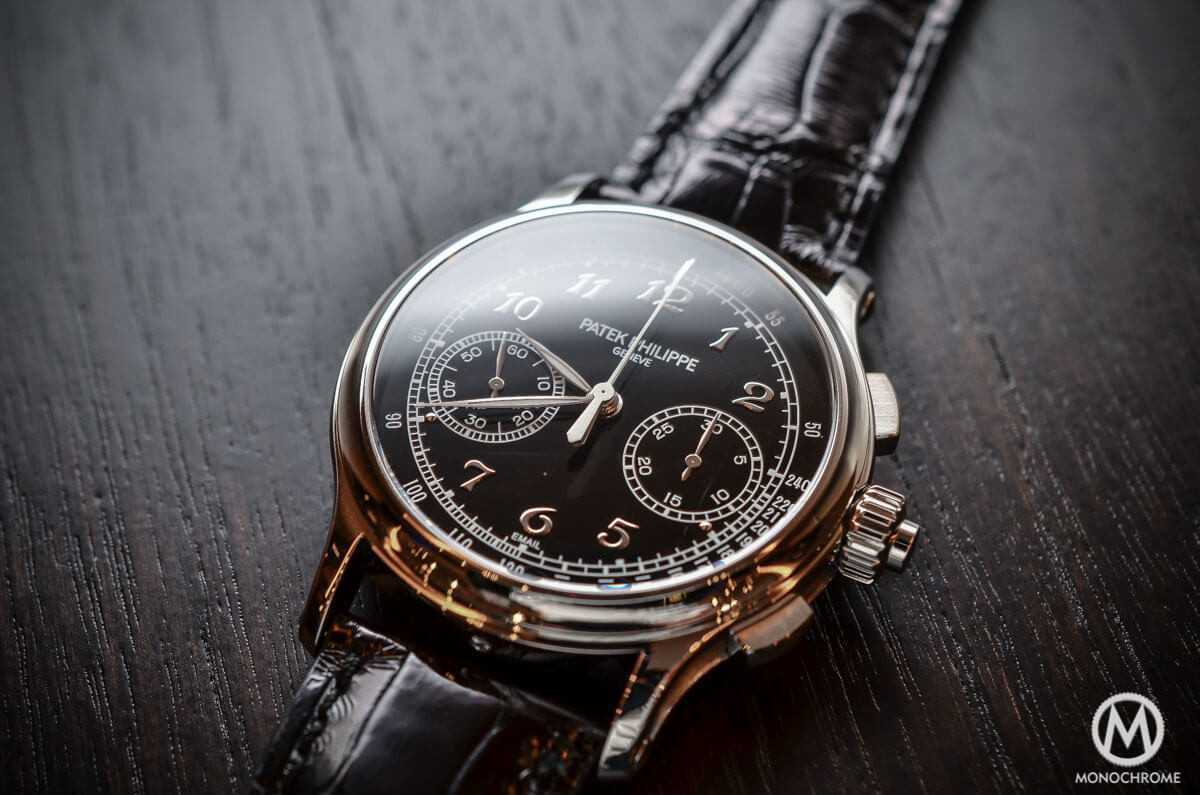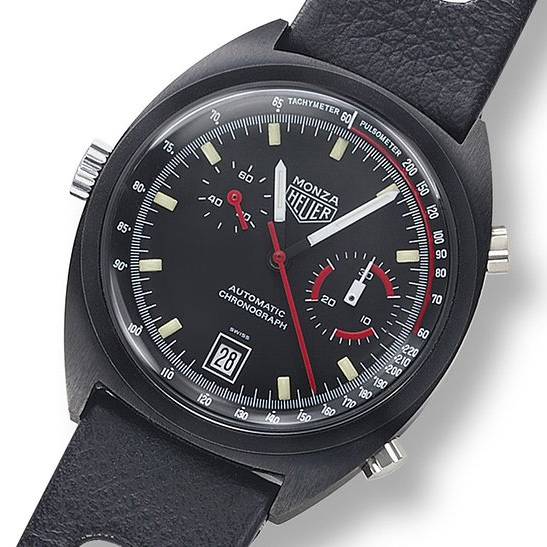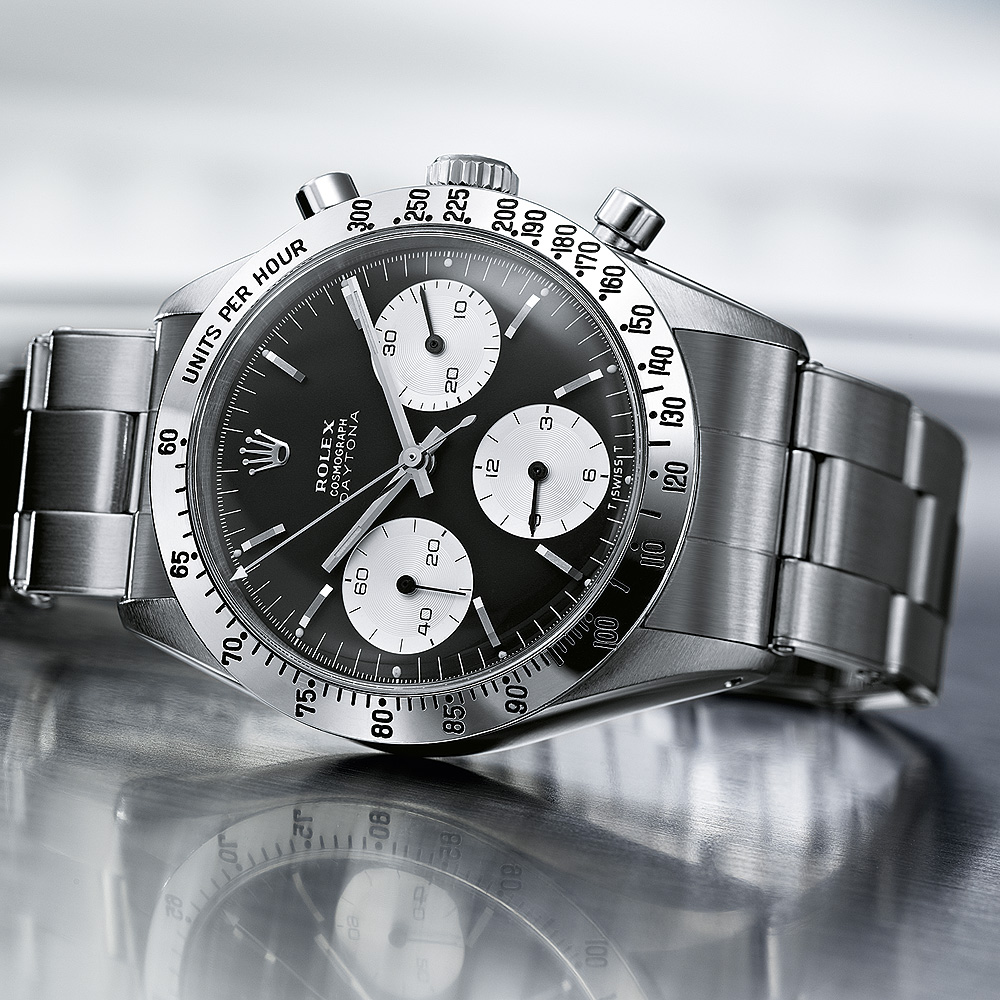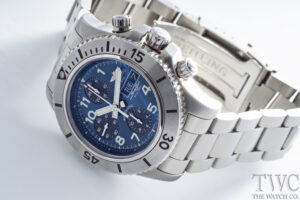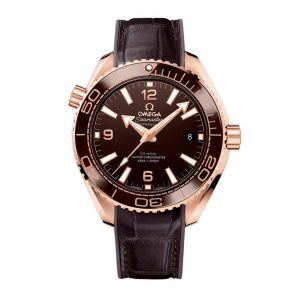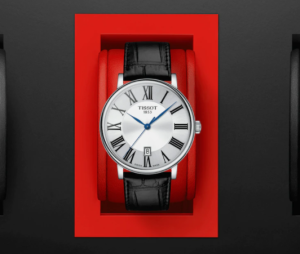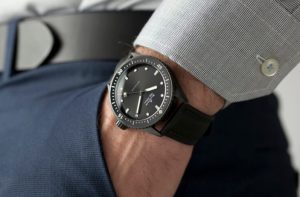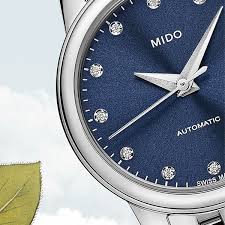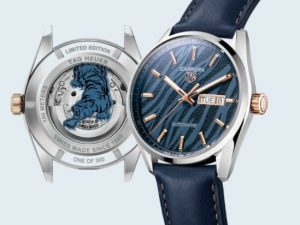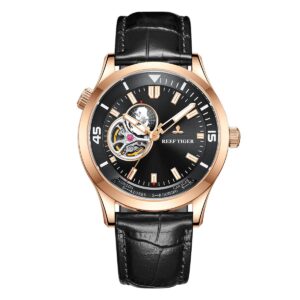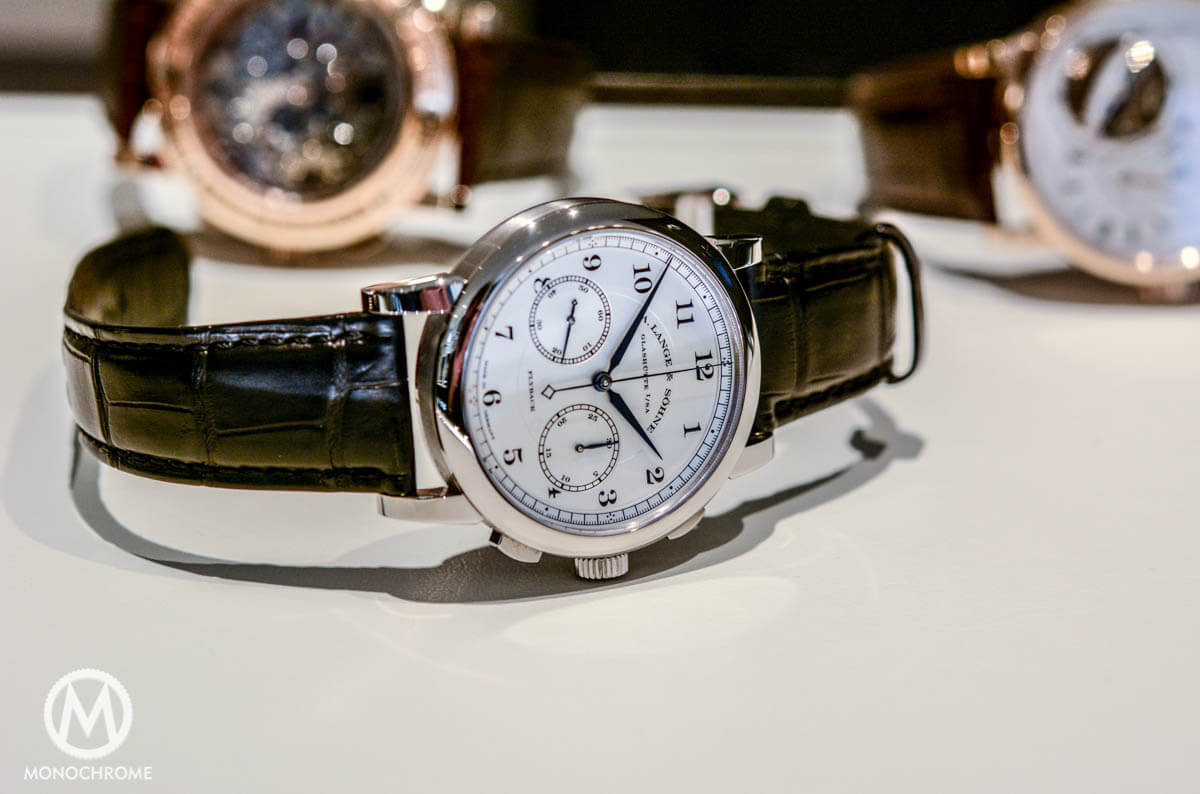
In the past years we have reviewed, what we consider to be the very best and most beautiful, among chronographs. I’m talking about the A. Lange & Söhne Double Split and Datograph. Although these two chronographs are relatively ‘young’, they are already well-known, and beloved, among collectors. Their design is iconic – something that this German brand seems to be very good at – and inimitable. That’s not just because of what can be seen on the dial side, however when turning the watch over, you’ll see a movement that is absolutely stunning. After reviewing the mighty Double Split (as it’s lovingly referred to by collectors) and the Datograph, we’re going to have a look at their little brother, the A. Lange & Söhne 1815 Chronograph.
Yes, we called the 1815 Chronograph the DS and Dato’s little brother. To put things into perspective: there are 10 chronograph references in the collection of this 25 year young brand, and the 1815 Chrono is the most affordable with a retail price of just over € 43.000 Euro for the pink gold version. Let’s immediately make clear that A. Lange & Söhne is a league apart, and they do not have many peers. The movement architecture of their chronographs is breathtaking, and the finishing is of the highest thinkable level. That being said, the 1815 Chronograph might be the simplest chronograph in A. Lange & Söhne’s collection, however when comparing it to other chronographs out there, it is still one of the most impressive ones.





Due to the exclusivity of the brand, there are not that many retailers – and only a hand-full of official A. Lange & Söhne boutiques – in the world. During a recent trip to Amsterdam I purposely visited one of two retail points in the Netherlands (Schaap & Citroen jewelers has a Lange & Söhne corner) to have a closer look at this particular watch. After having the pleasure of doing an extensive review of both aforementioned chronographs, wearing each for several weeks, I was curious how these two compared to the 1815 Chronograph.
Here’s a brief hands-on comparison (which is different from our usual extensive reviews), so here we go with the facts. The biggest of the three is the Lange Double Split and it certainly has the most impressive movement, and functions, of the three. It features the world’s only double rattrapante, and all four chronograph/rattrapante hands come with a flyback function. The sheer size of the watch is also impressive and so is the weight. Next in line, and few millimeter smaller and thinner, is the Datograph. Its chronograph features a flyback function, however no rattrapante on this one. It does indicate the date in the outsized double date window, and the remaining power reserve is shown as well. The Datograph actually has a lot of similarities with the 1815 Chrono, albeit similarities that perhaps do not immediately catch the attention.
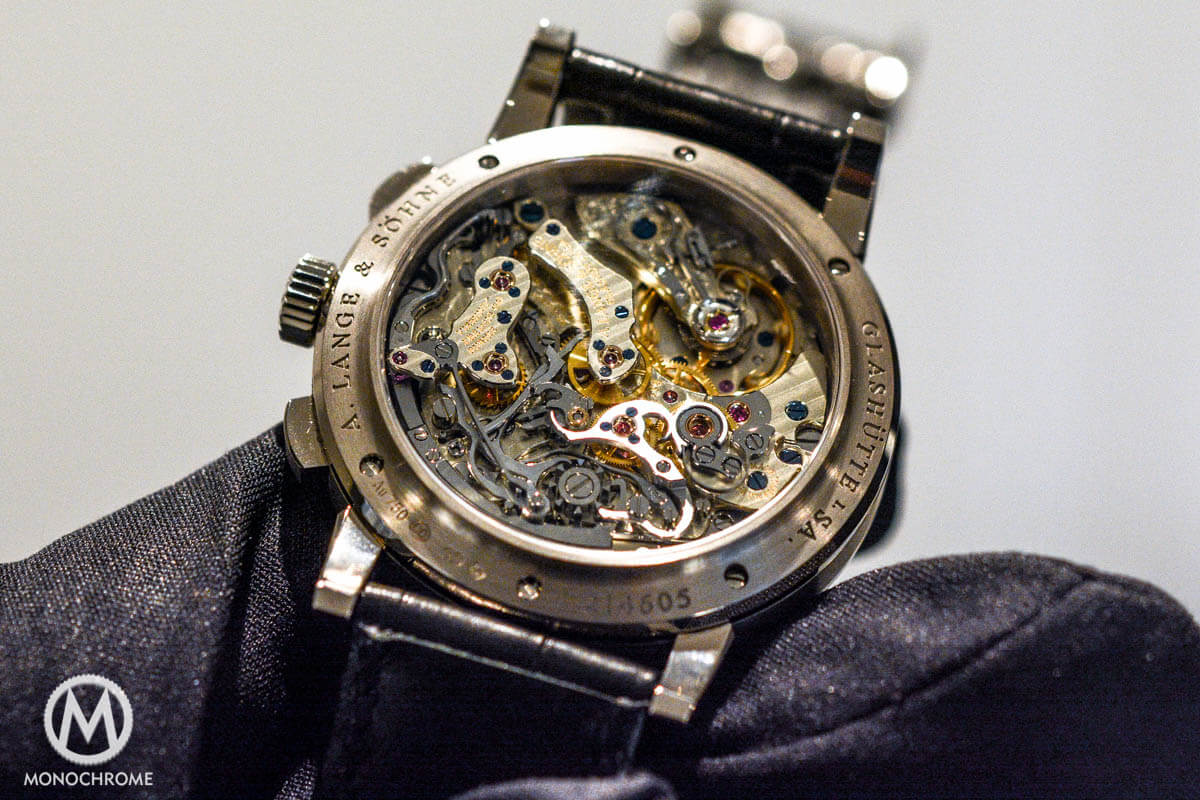
When looking at the movement, which is visible through a sapphire crystal, the main similarity becomes obvious. Its movement, calibre L951.5, looks exactly like the Datograph’s movement that is name calibre L951.6. The Dato obviously has the additional outsized date and power reserve indication, however the chronograph movement is indeed the same. The finishing is of the same impeccable quality and a feast for the eye. The only indication for this on the dial side, is the position of the chronograph’s 30-minute register and the running second sub dial, which are both positioned slightly below the horizontal axis.
The case of the 1815 Chronograph is smaller, and measures 39.5mm in diameter and 10.8mm in height, while the Dato is 41.0mm by 13.1mm. Like the movement it is finished to perfection, with straight brushed finish on the mid-case, satin finished (and engraved) case-back, and polished bezel. The lugs are mirror polished on the upward facing parts, and have the same straight brushed finish on the sides.
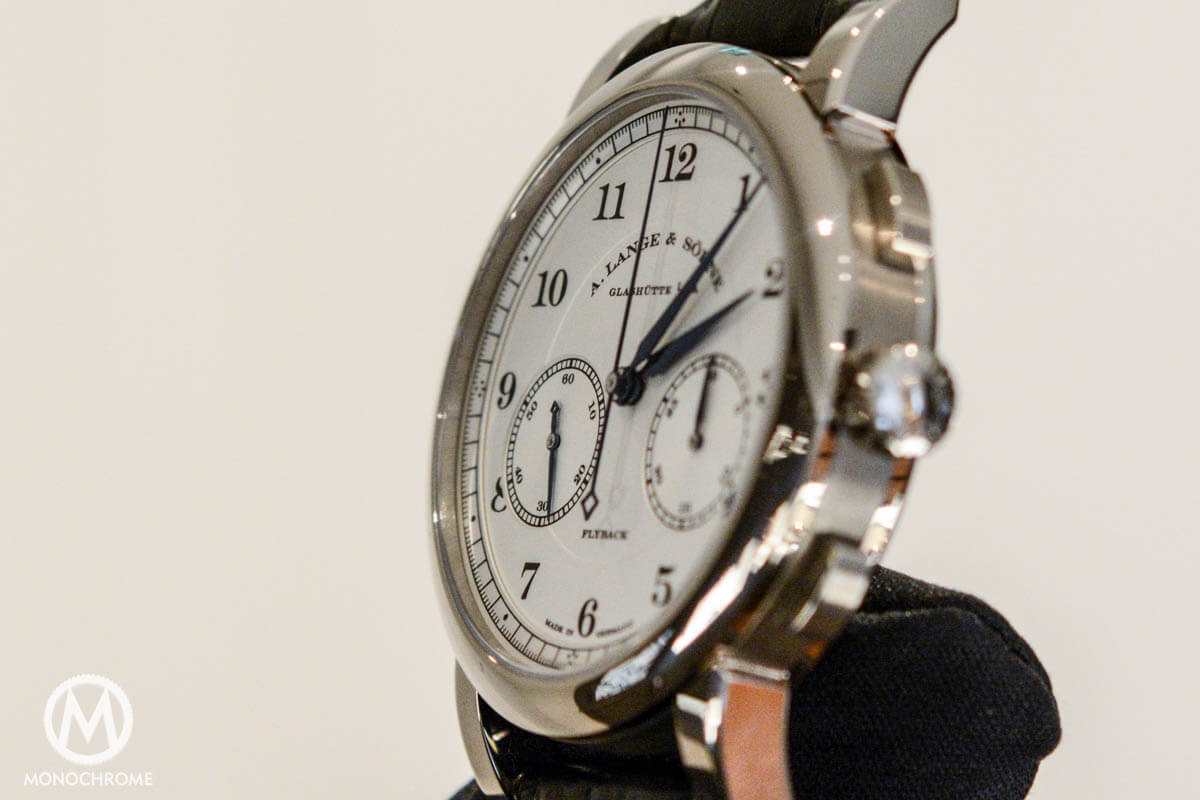
Due to smaller dimensions and lower weight, the 1815 Chrono is more comfortable on the wrist than its bigger brothers. That also means that it’s easier to fit under a tight cuff, of your dress shirt, and style-wise it has a more classic, dressy, look than for instance the Dato. The A. Lange & Söhne 1815 Chronograph has a retail price of € 43.400 Euros for the pink gold version and € 44.400 Euros for the version in white gold, which we showed you here. That’s quite a bit lower than the aforementioned Datograph, however you should take into account that the Dato we reviewed is in platinum (and that is always more expensive).
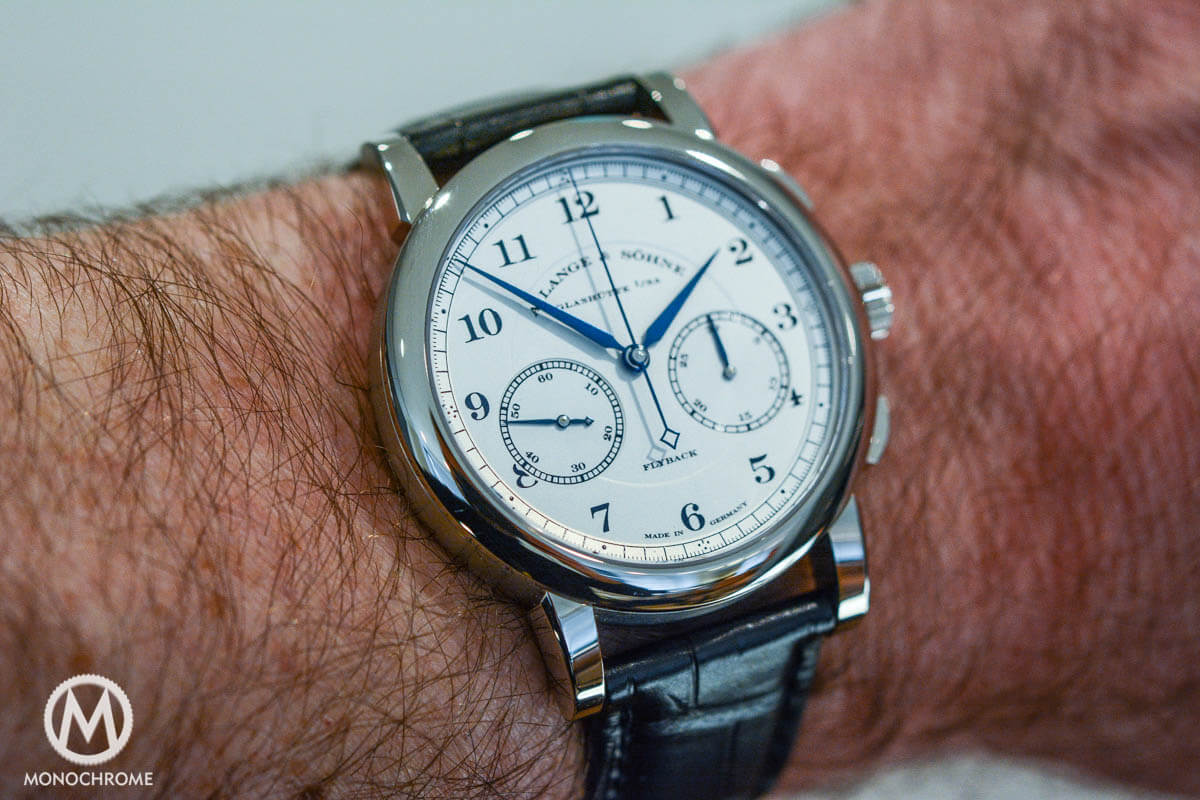
Final words: all-together the 1815 Chronograph is the most classy, and ‘dressy’, of the lot. There’s less going on, on the dial, and due to its smaller proportions it has a more classic appearance. And best of all, it features a stunning movement that is very close to that in the Datograph. With a retail price of just under € 45k it is great value for money!
[source by:http://monochrome-watches.com/a-lange-sohne-1815-chronograph-hands-on-with-specs-price/]
